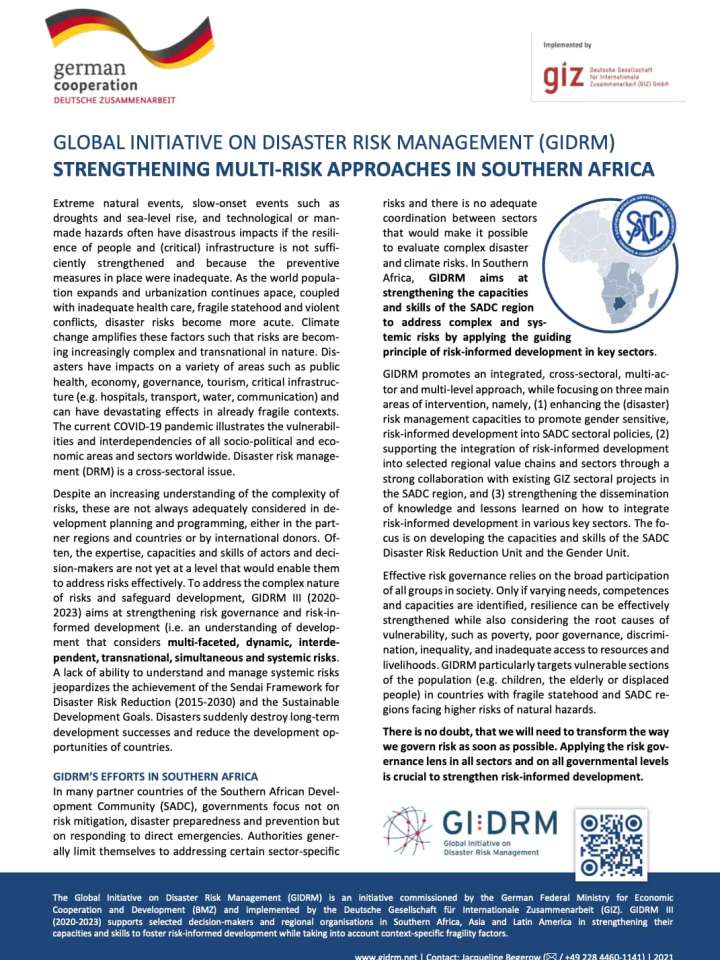Global initiative on disaster risk management (GIDRM): Strengthening multi-risk approaches in Southern Africa
Extreme events, slow-onset events such as droughts and sea-level rise, and technological or man-made hazards often have disastrous impacts if the resilience of people and (critical) infrastructure is not sufficiently strengthened and because the preventive measures in place were inadequate. As the world population expands and urbanization continues apace, coupled with inadequate health care, fragile statehood and violent conflicts, disaster risks become more acute. Climate change amplifies these factors such that risks are becoming increasingly complex and transnational in nature. Disasters have impacts on a variety of areas such as public health, economy, governance, tourism, critical infrastructure (e.g. hospitals, transport, water, communication) and can have devastating effects in already fragile contexts. The current COVID-19 pandemic illustrates the vulnerabilities and interdependencies of all socio-political and economic areas and sectors worldwide. Disaster risk management (DRM) is a cross-sectoral issue.
In many partner countries of the Southern African Development Community (SADC), governments focus not on risk mitigation, disaster preparedness and prevention but on responding to direct emergencies. Authorities generally limit themselves to addressing certain sector-specific risks and there is no adequate coordination between sectors that would make it possible to evaluate complex disaster and climate risks. In Southern Africa, GIDRM aims at strengthening the capacities and skills of the SADC region to address complex and systemic risks by applying the guiding principle of risk-informed development in key sectors.
Explore further
